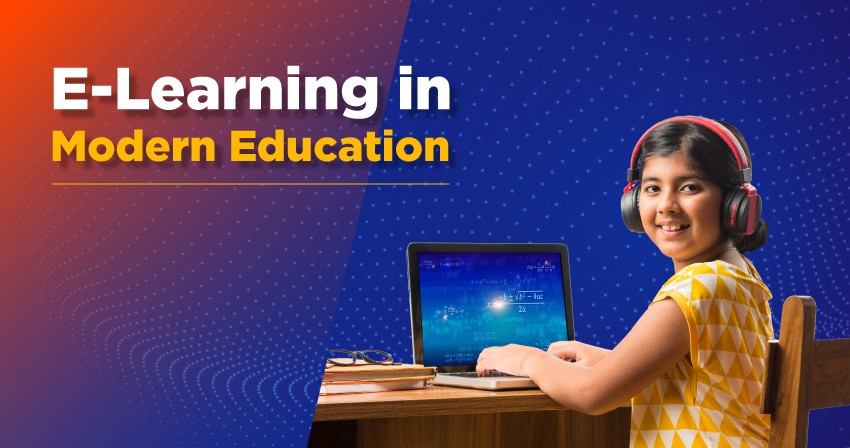
Benefits of E-Learning in Modern Education - 2025
Created on 5 January, 2025 • 4 minutes read
Discover the key benefits of E-Learning in modern education, including flexibility, cost-effectiveness, and accessibility. Explore how technology is transforming learning experiences.
Table of Contents
- Introduction to E-Learning in Modern Education
- Flexibility and Convenience
- Cost-Effective Learning
- Personalized Learning Experience
- Access to a Wide Range of Courses and Content
- Interactive and Engaging Content
- Self-Paced Learning
- Improved Technological Skills
- Environmentally Friendly
- Global Collaboration and Networking
- Real-Time Feedback and Assessment
- FAQs
- Conclusion
Introduction to E-Learning in Modern Education
In today's fast-paced world, e-learning has taken the education sector to a different level, opening new ways of learning for students and professionals alike. It is no longer that education is found only through classroom learning as digital platforms make learning accessible, affordable, and flexible.
E-learning has proved to be an essential part of the education system in the world today, brought about by the use of the internet, mobile devices, and interactive tools. Be it students seeking extra skills, professionals aiming to grow in their careers, or organizations seeking to train employees, e-learning benefits cannot be paralleled.
This article explores some major benefits of E-Learning in modern education and shapes the future of learning.
1. Flexibility and Convenience
One of the most significant advantages of E-Learning is the flexibility it offers. Learners can access educational content from anywhere, anytime, without being restricted by geographical boundaries or fixed schedules.
- Students can learn at their own pace.
- No need to commute to physical classrooms.
- Access recorded lectures and study materials anytime.
This level of convenience allows students and professionals to balance work, personal life, and education seamlessly.
2. Cost-Effective Learning
E-Learning eliminates many of the costs associated with traditional classroom education, including:
- Commuting expenses
- Accommodation costs
- Printed study materials
Online courses are often more affordable than physical classes, making quality education accessible to a broader audience. Moreover, free resources and platforms like Khan Academy, Coursera, and edX offer courses without any financial burden.
3. Personalized Learning Experience
Unlike one-size-fits-all traditional classrooms, E-Learning platforms cater to individual learning styles. Students can:
- Choose courses based on their interests.
- Set their own learning pace.
- Access resources tailored to their needs.
Advanced tools like Artificial Intelligence (AI) personalize content recommendations, making the learning process more efficient and engaging.
4. Access to a Wide Range of Courses and Content
E-Learning platforms offer an extensive array of courses across various disciplines, including:
- Business and Management
- Technology and IT Skills
- Health and Medicine
- Arts and Design
Learners can access expert-taught courses from world-renowned universities without having to enroll physically. This global access democratizes education, allowing anyone to learn from the best.
5. Interactive and Engaging Content
Modern E-Learning platforms incorporate interactive tools and multimedia to enhance learning experiences. These include:
- Videos and Animations for better understanding
- Quizzes and Assessments for self-evaluation
- Discussion Forums for collaboration
These interactive elements ensure that students stay engaged and motivated throughout the course.
6. Self-Paced Learning
One of the key benefits of E-Learning is the ability to learn at your own speed. Learners are not bound by rigid timelines and can:
- Pause and revisit lessons
- Take assessments when ready
- Spend extra time on difficult concepts
This method promotes better knowledge retention and reduces stress associated with tight deadlines.
7. Improved Technological Skills
Engaging with E-Learning platforms inherently improves digital literacy. Learners become familiar with:
- Online collaboration tools
- Virtual meeting platforms
- Digital research and analysis
These skills are highly valuable in today’s tech-driven job market.
8. Environmentally Friendly
E-Learning significantly reduces the environmental impact associated with traditional education:
- No paper usage
- Reduced carbon emissions from commuting
- Lower energy consumption in physical classrooms
It supports sustainable education practices, contributing to a greener planet.
9. Global Collaboration and Networking
E-Learning platforms often have learners from around the world, enabling global networking opportunities. Learners can:
- Collaborate with international peers
- Gain exposure to diverse cultures and perspectives
- Build professional relationships
This connectivity enhances global competence and teamwork skills.
10. Real-Time Feedback and Assessment
Modern E-Learning platforms offer immediate feedback through quizzes and tests, allowing learners to:
- Track progress effectively
- Identify strengths and weaknesses
- Adjust their study approach
This instant feedback loop accelerates learning outcomes and keeps students motivated.
FAQs About E-Learning in Modern Education
1. What is the main advantage of E-Learning?
The main advantage of E-Learning is flexibility, allowing learners to access education anytime and anywhere.
2. Is E-Learning as effective as traditional classroom learning?
Yes, when combined with the right tools and techniques, E-Learning can be equally or even more effective than traditional classrooms.
3. Are online certifications valued by employers?
Absolutely! Many employers value online certifications, especially when they are from reputable platforms and institutions.
4. What are the costs associated with E-Learning?
E-Learning is generally more affordable than traditional education, with fewer expenses for transportation, materials, and accommodation.
5. Can E-Learning replace traditional education?
While E-Learning offers many advantages, it is more of a complement to traditional education rather than a complete replacement.
6. How does E-Learning benefit teachers?
E-Learning platforms allow teachers to reach a broader audience, share resources easily, and track student progress efficiently.
Conclusion
E-Learning is no longer a futuristic concept it's a present-day reality transforming education worldwide. With benefits like flexibility, cost-effectiveness, personalized learning, and global access, E-Learning is playing a critical role in shaping the future of education.
As technology continues to evolve, the potential for E-Learning in modern education is limitless. Whether you're a student, professional, or educator, embracing E-Learning can open doors to unparalleled growth and opportunities.
Start your E-Learning journey today and be a part of the future of education!
Related reading: